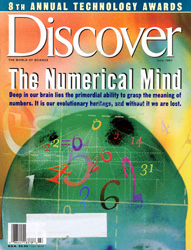
Discover
July 1997

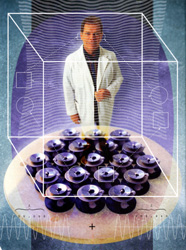
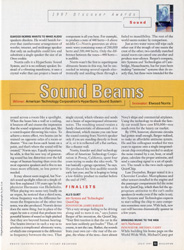
1997 Discover Awards
SOUND
Sound Beams
Winner: American Technology Corporation's HyperSonic Sound System
Innovator: Elwood Norris
Elwood Norris Wants To Make Audio speakers obsolete. He would banish forever that cumbersome arrangement of woofer, tweeter, and midrange speaker that only an audiophile could love and substitute a single speaker the size of an Oreo cookie.
Norris calls it a HyperSonic Sound System, and it is no ordinary speaker. Instead of a vibrating membrane, it uses a crystal wafer that can project a beam of sound across a room like a spotlight. When the beam hits a wall or a ceiling, it bounces off and creates the impression that the sound originates at that spot, like a ventriloquist throwing his voice. To achieve a stereo effect, two beams can be trained on opposite sides of a room or theater. "You can focus each beam on a point, and that's where the sound will be created," Norris says. Equally important, he adds, is that his new way of generating sound has less distortion over the full range of human hearing than even the most expensive speakers and is five to ten times more efficient, so less power is needed.
It may almost seem magical, but Norris's sound spotlight relies on a simple effect first explained 150 years ago by the physicist Hermann von Helmholtz. When playing two notes very loudly on an organ, he noticed that a third note, whose frequency was the difference between the frequencies of the other two notes, was also produced. Norris's device does the same thing, but in place of the organ he uses a crystal that produces two powerful beams of sound so high-pitched that they are beyond human hearing. The beams interact in such a way as to produce a complicated ultrasonic wave, of which one component is the difference in frequency between the two. That component is all you hear. For example, to produce a note of 440 hertz--A above middle C--Norris generates an ultrasonic wave containing tones of 200,000 hertz and 200,440 hertz. Only the difference between the tones--440 hertz--is audible.
Norris wasn't the first to superimpose ultrasonic beams in this way, but he succeeded in mixing several signals electronically sending them through a single crystal, which vibrates and sends out a beam of superimposed ultrasonic notes. The resulting sound retains a handy characteristic of ultrasound--it is directional, which means you can hear the sound coming from Norris's speaker only if you are standing directly in front of it, or it is reflected off a flat surface, like a theater wall.
Norris, founder and chief technology officer of American Technology Corporation in Poway, California, spent four years trying to make the idea work. "It was basically a garage operation," he says. He produced his first audible sounds early last year, and he is hoping to bring a low-fidelity product to market before the end of 1997.
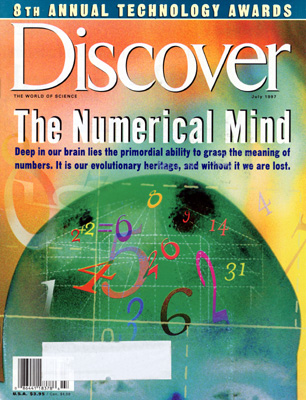
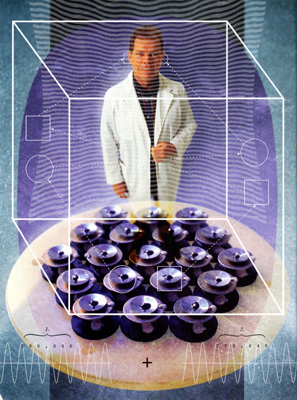
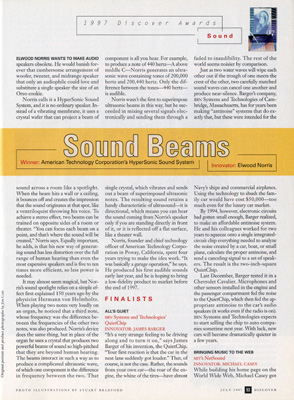
Contact Webmaster
Copyright © 2001-2005 Woody Norris. All rights
reserved.
Revised: September 29, 2005